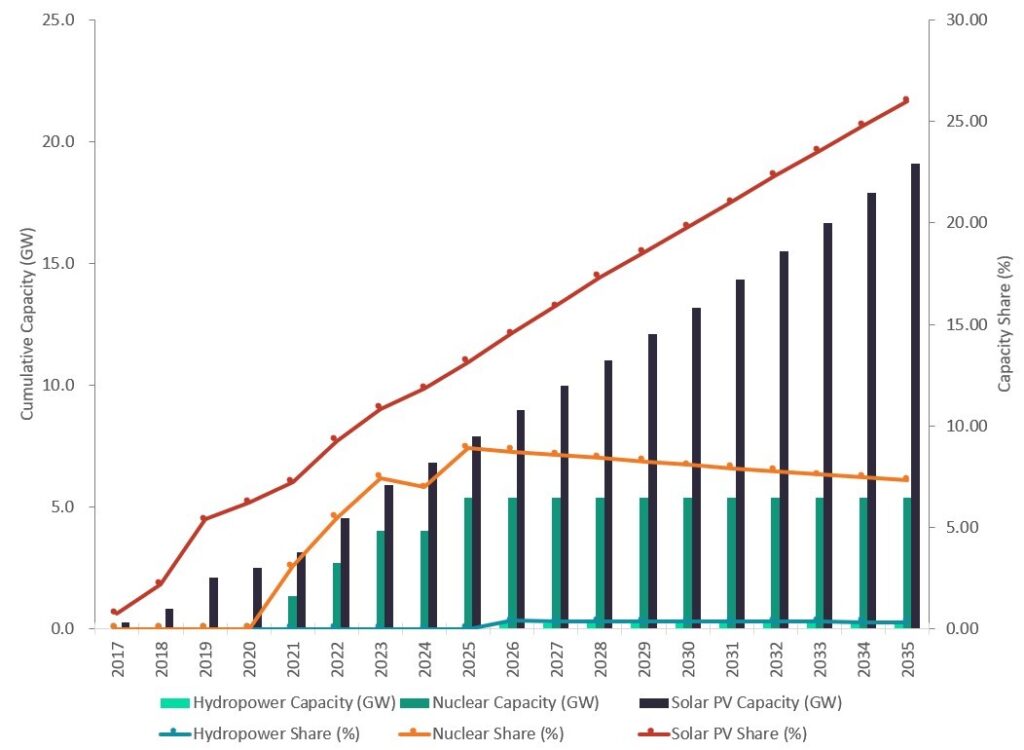GlobalData’s latest report, ‘United Arab Emirates (UAE) Power Market Outlook to 2035, Update 2022 – Market Trends, Regulations, and Competitive Landscape’, discusses the power market structure of the UAE and provides historical and forecast numbers for capacity, generation and consumption up to 2035. Detailed analysis of the country’s power market regulatory structure, competitive landscape and a list of major power plants are provided. The report also gives a snapshot of the power sector in the country on broad parameters of macroeconomics, supply security, generation infrastructure, transmission and distribution infrastructure, electricity import and export scenario, degree of competition, regulatory scenario, and future potential. An analysis of the deals in the country’s power sector is also included in the report.
The UAE currently relies on thermal power for most of its electricity supply, and in 2021 this accounted for 92.6% of its total electricity generation. However, the country is looking to reduce its dependency on thermal power and move towards clean energy. The country aims to meet 30% of its power needs using clean energy by 2030.
The UAE is working to introduce pumped hydro into the country’s power mix. This is expected to start with the Al Hattawi pumped storage plant when it begins commercial operations in 2026. The project is being designed to use and store water from the existing Hatta dam for generating electricity during peak demand periods. The project was launched as part of the Dubai Clean Energy Strategy 2050, which aims for three-quarters of the UAE’s total power output to be from clean energy sources by 2050.
The largest source of clean energy opportunities is expected to emerge from the renewables sector, especially solar. Conditions in the UAE are ideal for solar power generation, and the government is assigning large swathes of barren land for solar parks (both photovoltaic [PV] and Concentrated Solar Power [CSP]), which will help satisfy local demand as well as meet export requirements.

If the planned solar parks go ahead, key challenges for the solar technology could include excessive heat impacting module efficiency, as well as the damage that could be inflicted upon the solar panels and mirrors due to dust and sand. This would increase the cost of maintenance of the solar PV plants.
The country has several support mechanisms, such as smart Dubai initiatives, net metering and auctions. The UAE aims to generate 50% of its electricity from carbon-free sources, driven mainly by solar PV, by 2050. Abu Dhabi plans to install 5.6GW of solar PV capacity by 2026, and Dubai aims to source 75% of its electricity generation from renewables by 2050. These targets are expected to aid the rapid deployment of renewable power plants in the country.
How well do you really know your competitors?
Access the most comprehensive Company Profiles on the market, powered by GlobalData. Save hours of research. Gain competitive edge.

Thank you!
Your download email will arrive shortly
Not ready to buy yet? Download a free sample
We are confident about the unique quality of our Company Profiles. However, we want you to make the most beneficial decision for your business, so we offer a free sample that you can download by submitting the below form
By GlobalDataReal Gross Domestic Product (GDP) (USD, 2010 prices) increased from $289.8bn in 2010 to $389.3bn in 2021. The GDP had a yearly growth rate of 2.5% in 2021 as compared to 2020, due to the Covid-19 pandemic. The GDP witnessed an average annual growth of 2.8% from 2011 to 2021.





Related Company Profiles
CSP Inc